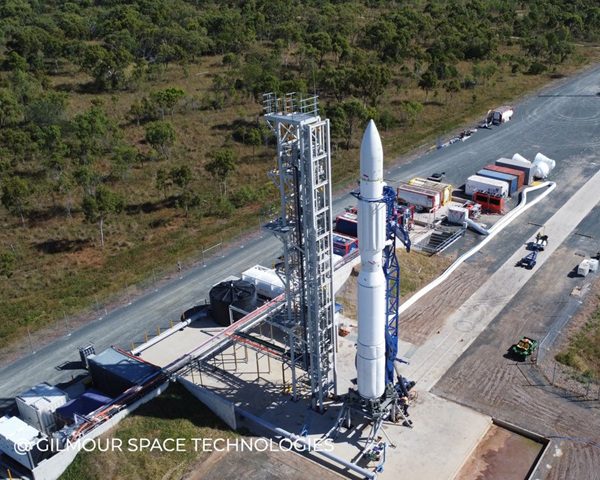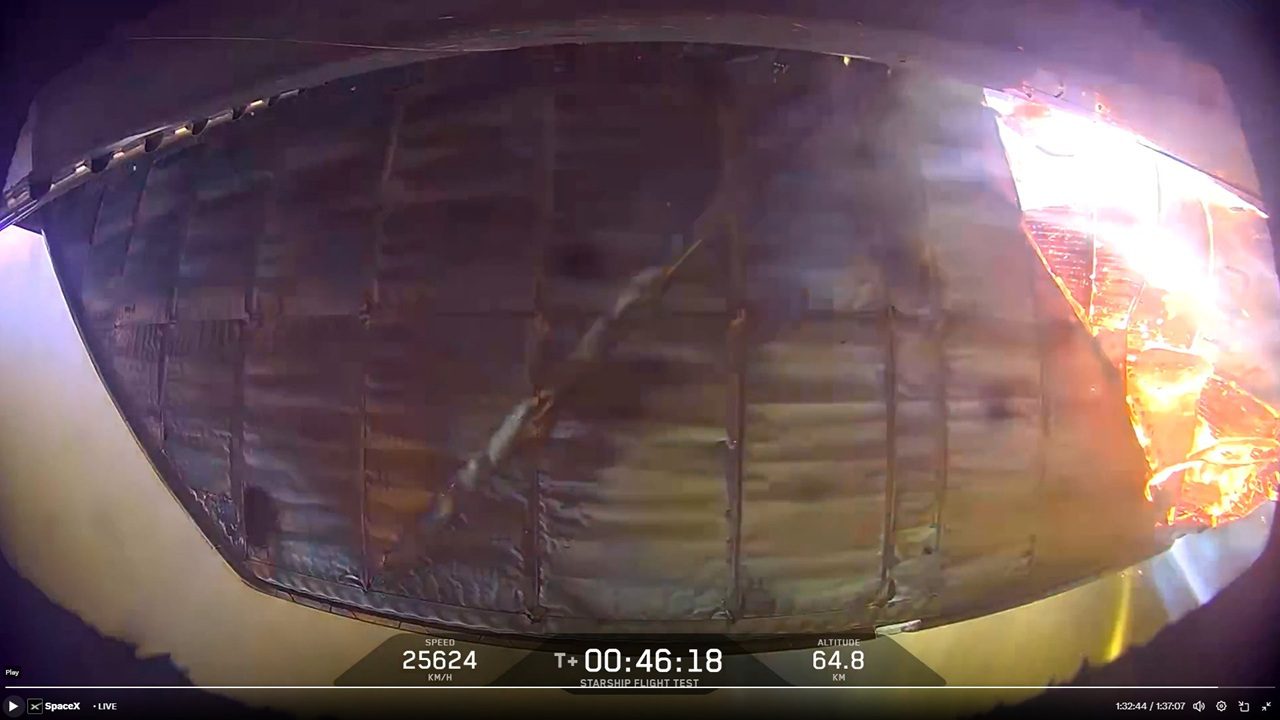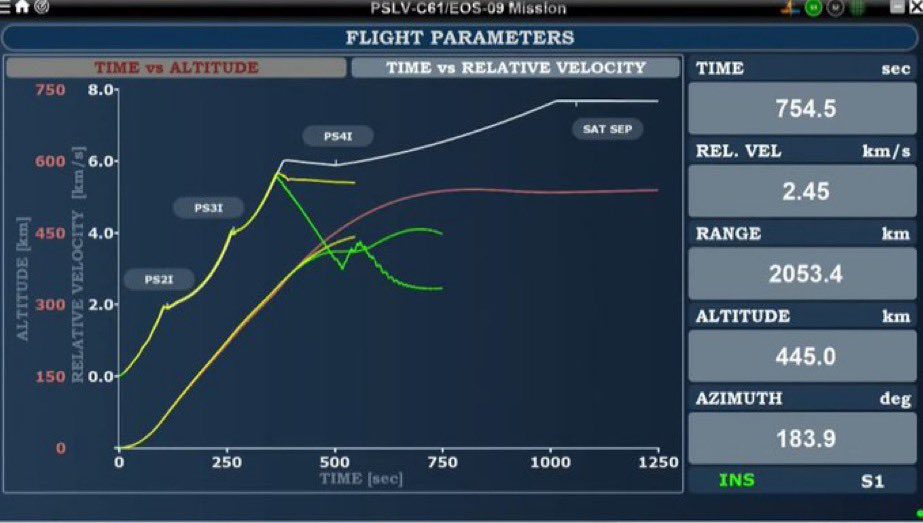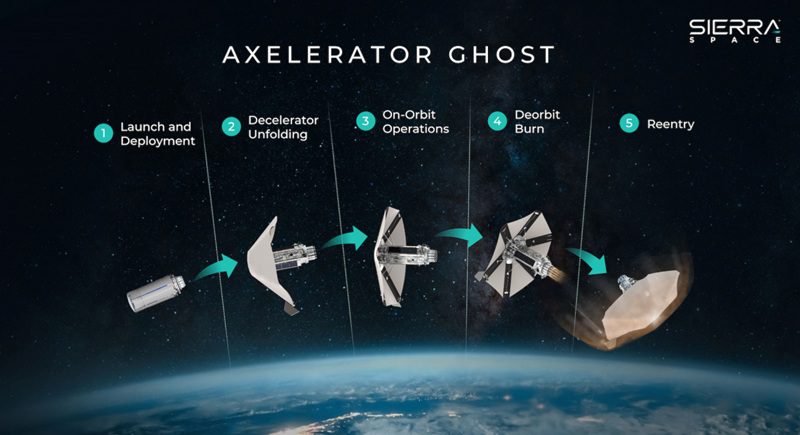Controllers at the Indian Space Research Organisation (ISRO) were licking their wounds after its unmanned landing attempt on the Moon ended in failure – and with India’s Prime Minister, Narendra Modi, looking on.
The Chandrayaan-2 Orbiter/Vikram Lander/Pragram Rover combination achieved lunar orbit on 20 August after a long-winded journey involving a spiral orbit raise around the Earth and a trans-lunar transfer. This was followed by an orbit lowering process around the Moon. The Vikram lander (with Pragyam lander aboard) separated from the Chandrayaan-2 orbiter at 0745 GMT on 2 September. After some engine tests a few days before the landing attempt, the lander made a rough braking burn at 0208 GMT on 6 September from 30 km above the surface of the Moon. At 2018 GMT fine braking started at 7.4 km above the surface, near the south pole of Earth’s natural satellite.
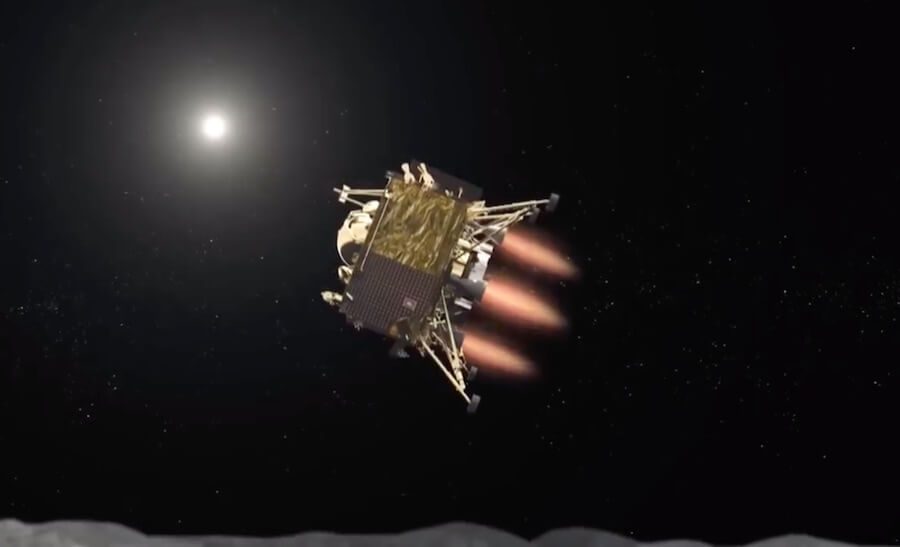
Artist’s impression of the Chandrayaan-2’s Vikram lander with Pragyam rover on board starting its landing sequence. Courtesy: ISRO
Touchdown was to be at 2023 GMT. Indian observers and controllers started their applause during the fine braking phase just before the transition to “hover mode”, and before the actual landing had been achieved. However, this was a case of “premature congratulation” as all contact was lost with the Vikram lander at an altitude of 2.1 km. The lander/rover combination fell in an uncontrolled way and hit the lunar surface. The Vikram lander (with the Pragyam rover inside it) ended up intact but in a tilted position on the lunar surface. Attempts at contacting the lander were unsuccessful and at least that part of the mission is deemed to be a total loss. It is believed that an interruption to the engine thrust, due either to an engine fault or a control system error, was the cause of this failure.
ISRO can at least console itself that the Chandrayaan 2 mission was not a total loss. The crashed lander was imaged by the Chandrayaan 2 Orbiter element, which survives along with its suite of instruments. It is expected to last a further seven years doing important scientific study of the Moon from orbit.
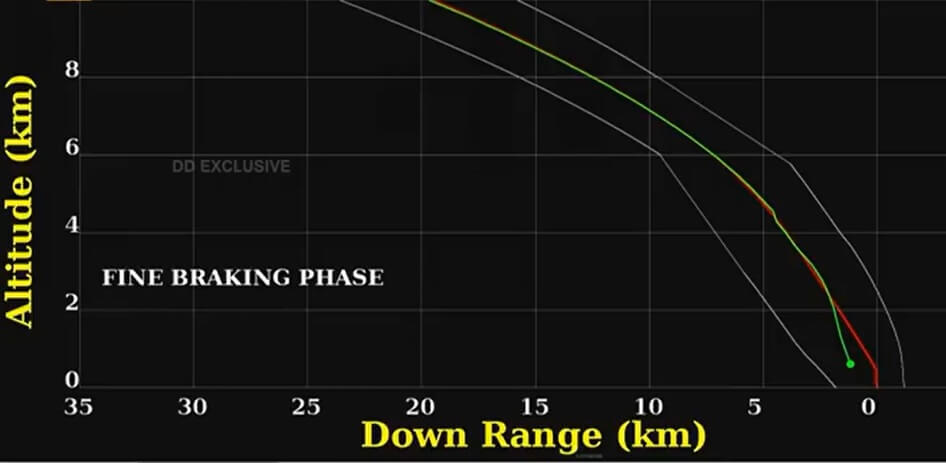
Vikram’s fall away from its planned trajectory during fine braking is visible on the official mission control display. Courtesy: ISRO
Joint ISRO/JAXA Chandrayaan 3 is mooted but ISRO joins with CNES for maritime tracking
Before this failure, it had been mooted that a Chanrayaan 3 mission might be mounted in combination with Japan’s JAXA space agency. Whether this happens or not, India is reaching out to other space agencies on other projects. On 22 August, the French space agency CNES announced that it had signed an agreement with ISRO for the joint development of a maritime constellation for space surveillance/continuous tracking of ships.



